
It was not until 1 April 1862 that the prepayment of postage became obligatory. Also, at that time, gold was discovered in Otago.
These two factors greatly increased demand and Davies ran out of the star watermarked paper. Printings were therefore made of all four values in 1862 on pelure (i.e. very thin) paper and of the 2d in 1863 on thick soft paper.
Unwatermarked pelure paper 1862
The 1d, 2d, 6d and 1/- were printed on this very thin unwatermarked paper with the 2d and 6d being the more common.
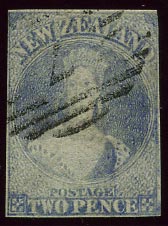
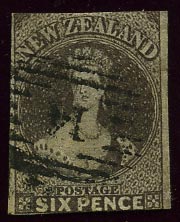
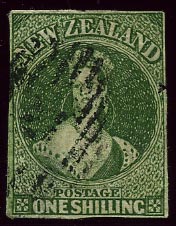
The colour of the 2d is of interest. It is now a pale dull ultramarine, but was once much brighter in colour. It has faded badly and copies now typically have a blotchy appearance as shown in the figure.
The 1/- is in a distinctive deep green colour.
2d on thick soft unwatermarked paper
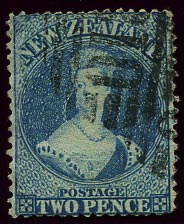
Although fresh stocks of the star watermarked paper arrived in late 1862 along with the 3d plate, Davies had to use another source of paper again in 1863. This time, a thick soft unwatermarked paper was used to print the 2d.
The colour is a deep blue and the stamps show the beginning of plate wear
to the right of the Queen's head.
As well as being issued imperforate, copies exist perforated 13 at Dunedin.
This perforation is discussed in the next section.
Perforated 13 at Dunedin
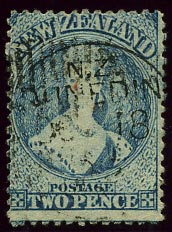
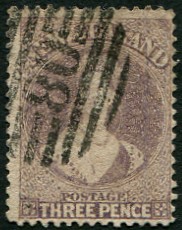
When gold was discovered in Otago, the demand for stamps in Dunedin increased dramatically. In 1861, Dunedin handled 205,000 letters while Auckland handled 233,000. By 1863, the Dunedin figure had risen to 1,354,000 compared to an Auckland figure of 607,000.
To speed up the separation of stamps, in 1863 the Dunedin postmaster contracted a local firm, Messrs Ferguson and Mitchell, to perforate stamps on both star watermark and pelure paper. The perforation machine was a line machine with a gauge of 13.
The first perforations of New Zealand stamps are therefore only semi-official. As they were paid per sheet, the operators perforated several sheets at one go and so the perforations are usually misplaced.
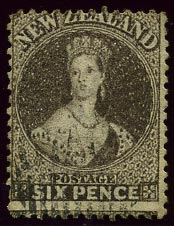
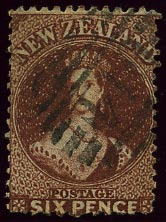
Care must be taken in distinguishing these stamps from the official and more common perf 12½ that appeared the following year. The perforations must be a full perf 13 on all sides.
The 6d occurs in both black brown and red brown.
As the 6d black brown is much commoner perf 13 than in the
later perf 12½, it forms a useful benchmark.
NZ watermark
This watermark was introduced in 1864 for the 1d, 2d, 6d and 1/- values.
The official perforating machine was introduced at this time, but
the 1d and 1/- on NZ paper were printed before the introduction
of the perforating machine and so are imperforate.
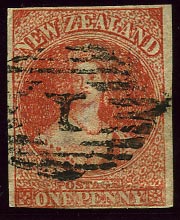
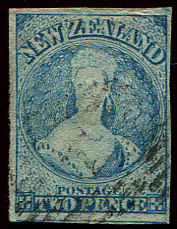
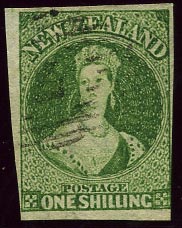
More than one printing was made of the 2d and it exists both imperforate and perforated 12½ with relatively few being issued imperforate. The 2d was very worn by this stage.
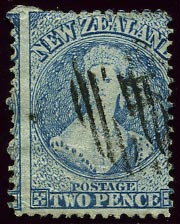
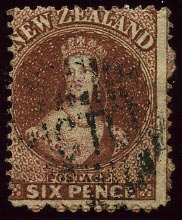
The 6d was produced later and is normally perforated 12½.
Davies commented adversely on this paper and a return was made to the star watermark paper in late 1864.
The issues on star watermarked paper
issued before the brief use of
the NZ paper were imperforate while those issued afterwards were
perforated 12½.
The above information is taken from The Postage Stamps of New Zealand Vol 1, published by the Royal Philatelic Society of New Zealand in 1938. All scans were made by the author.